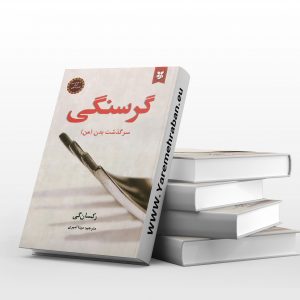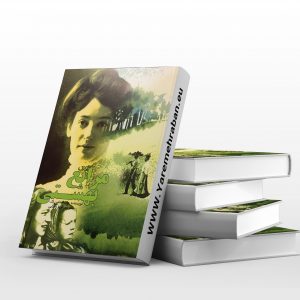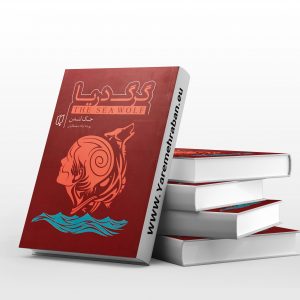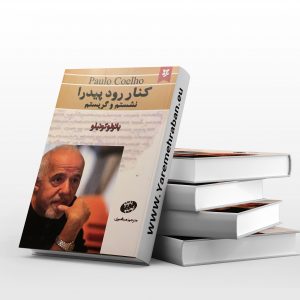Description
Introducing the book Wolf of the Desert by Hermann Harse
The desert wolf is the hadith of the tired and painful artist and intellectual of our time; A lonely and isolated artist who suffers and is incompatible with his environment. On the eve of his fiftieth birthday, he was a displaced man with a home; Without a steady profession, and helpless and sympathetic, this confused wanderer nested with a family for a while.
Then, as has been said, he is once again lost in his wanderings. What is left of him is the only notebook with which we get acquainted with his philosophical pains. These notes recount the loneliness and suffering of Haller, a man who is lost forever and deprived of his homeland: doomed to displacement and loneliness.
The Wolf of the Desert is the story of a thoughtful man who suffers from himself and his environment and has a fiery desire to reach the status of a human being and discover the truth. He criticizes the current formal civilization and its results and the belief in the truth. And he considers humanity in life as the reason for man’s path. Throughout the book, there is an upward pull.
About the author of the book The Wolf of the Desert by Hermann Harse
Hermann Hesse in 1946 for his inspirational writings, which vividly and courageously depict ancient humanitarian ideals and the high quality of his style; Won the Nobel Prize. This German poet and writer has been selected as one of the most popular German-language writers of the twentieth century, and his works depict the coexistence of soul and nature, as well as the body in front of the mind. He has made spiritual exploration outside the confines of society one of the main themes of his books.
Hesse was raised in a religious family, and his parents were both religious missionaries in India, but their expectation that their son would follow the family tradition did not materialize, and Hermann Hesse fled shortly after entering religious school. It was the beginning of a serious crisis in his life that led to some time under psychological care. After this unpleasant experience, he engaged in various jobs, including watchmaking and bookstoring. In the bookstore, he was responsible for organizing and archiving books, and after finishing his work and holidays, he spent all his time reading various books, especially on the subject of philosophy.
His first collection of published poems was not well received, but after the publication of his first novel, he became famous and with each book he was introduced to more countries in the world. However, it was only after his death that this fame spread significantly. Hesse’s works are mostly based on his personal experiences and perceptions of his surroundings. He paid close attention to Indian philosophy and Buddhism, and the etymology of Eastern and Western religions was one of his favorite subjects in writing the book. The influence of nature on his place of residence in childhood is one of the salient features of his works. Most of the characters in Hesse’s stories are confused and confused in search of identity and values.
Hermann Hesse’s many books have been translated and published in Iran and he has long been considered one of the most important authors. These include Desert Wolf, Damian, Siddhartha, Narcissus and Goldmond, The Game of Glass, Peter Commentsind, and If the War Continues.
Hermann Hesse’s books are among the first serious novels read by young people, especially Europeans, on the eve of entering adulthood. By reading Hesse’s novels, many young Europeans were encouraged to do different things.

Life Beyond Everyday Life
Hermann Hesse’s first novel was Peter Commensind. The story of a young man who loves nature and is upset, leaving the bourgeois society and embarking on a long journey. During this journey and with the adventures that happen to him, he realizes that natural life is superior to the life immersed in the material things that were prevalent at that time. Peter finally realizes that he does not want to follow the path that many have taken. He wants to walk decisively in the path he has found. He realizes that it was not made for collective life.
Peter Commensind’s book was written by a young man about his youth. On the other hand, Desert Wolf’s book is about the midlife crisis. But it is interesting to know that this book was written by Hermann Hesse just before his fiftieth birthday. Maybe that’s why this book was so popular with young people in the 1960s.
Why did young people love Hermann Hesse’s novels?
Hermann Hesse does not speak directly to young people in his books. But in his stories he writes about the forces of youth. The forces that adults have forgotten, but young people still have, such as boredom, excellence, and great demands on life. Many young people saw themselves as the protagonists of Hesse’s stories, a sensitive man whom no one in society understands. Hesse once took this young man to India during his lifetime as a Buddha and named him Siddhartha. Once he took this young man in the jazz era in Germany and named him Harry Haller. He once showed the middle age of this young man.
Hermann Hesse, author of The Lebensform Movement
Lebensforum is a social movement that emerged in Germany and Switzerland in the late 19th and early 20th centuries. The main idea of this movement is to return to a normal lifestyle. Their main emphasis was to provide food in an organic way, to have freedom in every aspect, to de-religionize, and at the same time to refrain from consuming alcohol and any drugs.
Hermann Hesse, as one of the most influential writers of that time and in that geography, played an important role in spreading this idea among the youth of that time.
Familiarity with the best novels of Hermann Harse
Siddhartha is the story of the son of the great Brahminical world, Brahman Farzaneh, who lived as a child like his father. He lived in luxury and knew nothing of the hardships of life. All the people praised the Siddhartha. But the Siddhartha did not feel good from within.
The Siddhartha constantly thought from within that the joys around him were not eternal and would one day end. So he decided to embark on a long journey to see the world from a new angle. In this way, he clings to voluntary deprivation in order to taste poverty. After this, he enters the world of voluntary pleasures so that his soul and mind may experience great suffering. Eventually he achieves a voluntary unity.
Hermann Hesse’s parents were religious missionaries in India. That is why he achieved Indian philosophical thought through them. For this reason, in the novel Siddhartha, he can characterize very accurately.
Behavior towards the morning
Hermann Hesse wrote The Story of the Morning in 1932. A story that is considered to be Hermann Hesse’s most personal and at the same time most mysterious book. The book describes the spiritual journey of a person named H.E. to the morning of knowledge. In a way that it can be considered as its symbolic biography.
In the post-war years, H.H. joins the circle of morning seekers to take part in this journey. But this trip remains part-time. Because in the middle of the journey, the group servant who holds the group charter disappears. With his departure, the weakness and hesitation that had permeated the group for a long time increases.
Now the narrator leaves the group and tries to write something about the group and its purpose and their story, and this is how he gets to know himself again.
Gertrude
Gertrude’s novel is about a love triangle, narrated by a man named Kahn. Opera singer Heinrich Moth begins a romantic relationship with Gertrude. At the same time, Kahn loves Gertrude. Heinrich and Gertrude get married and this causes a lot of pain and suffering in Kahn.
Their lives do not go well and they separate after a while. This failure affects both of them. But all of these stories become a source of inspiration for Kahn to perform his best opera.
In this novel, too, Hermann Hesse talks about the growth and development of human beings after enduring suffering.
My friend’s story
My friend’s story is a personal story called Connolp. He is a shrewd man who has chosen to be free and has preferred travel and desert tourism to monogamy. He lives in the moment and is a happy person overall. In this novel, we read the story of his encounter with different people.
We recommend this book to all young people who are constantly complaining about their own lives and do not have a happy life in general. Because by reading this book, we will find a new perspective on life. We realize that perhaps the problem with our definition of success and a good life.
Return of Zoroaster
The Return of Zoroaster is a collection of letters written by Hermann Hesse. The main content of these letters is a critique of the industrialization of cities and the tendency of people to urbanize. In these letters, Hesse tries to show his spiritual worldview to everyone with the help of literature. In these letters, Hesse portrays his anti-war and nationalist thinking in words.
1- Introducing the book on YouTube
2- Introducing the book in Aparat














Reviews
There are no reviews yet.